If you’re into Magic The Gathering, You likely already have a good idea of what the most overpowered MtG cards of all time are – at least until the next big power creep peak comes. But what about cards so bad that having them in your deck would actively make it worse?
This is the kind of ancient knowledge that’ll make you look like a wise sage to people who haven’t been playing the game for long, or at least a source of great laughs.
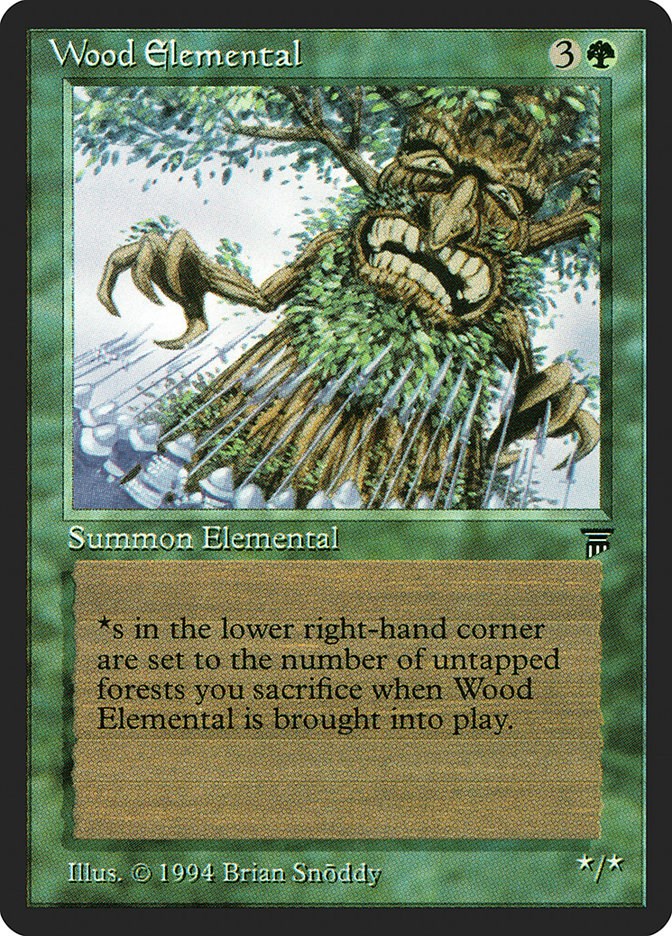
Wood Elemental
Everything about Wood Elemental is just bizarre. It has a 4 mana cost and it requires players to sacrifice at least one untapped forest if its owner doesn’t want it to die upon summoning. This means that if you want it to be an ability-less 4/4, for example, you’ll need to waste 8 mana in one single turn, burning 4 forests in the process. It’s an actively terrible card that even seems to go against its own concept. Why would a green elemental require you to destroy green lands? Aren’t these elementals meant to live to protect their element? Did they mean, like, chopped wood elemental?
Wood Elemental’s artwork is what gave me the idea to come up with this list in the first place. That’s because, as a card, Wood Elemental is about as good as its artwork. Brian Snoddy’s work usually owns, so maybe he knew beforehand what card he was making the artwork for.
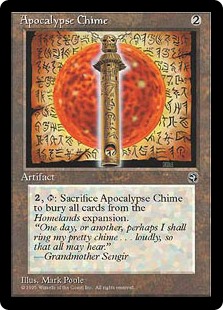
Apocalypse Chime
This is likely MTG’s first foray into the world of Meta gameplay. This serious but very self aware card will ask players for four total mana if they want to destroy all cards from its own set. Problem is, Homelands, the set in question, was never known for its very powerful cards – even less so today.
The Apocalypse Chime was never any good, but it gets even worse by the day. Right now I’d say it’s like a nuke that only kills creatures that have long gone extinct.

Juju Bubble
Imagine coming up with such beautiful art only to see it in such a terrible card.
Juju Bubble is a great card, but only for high schoolers looking to scam third graders who’re trying to get into the game. It looks great and offers a source of healing, which newcomers will likely think is just an amazing thing. It’s not, especially when said healing comes at the cost of not just slowing down your play flow, but completely stopping it at some point. That amount of healing isn’t worth the cost, let alone when you basically have to stop playing the game to keep it. This card would’ve been terrible even if it weren’t for its cumulative upkeep, which means you have to pay 1 more mana each turn to keep this already awful charade going.
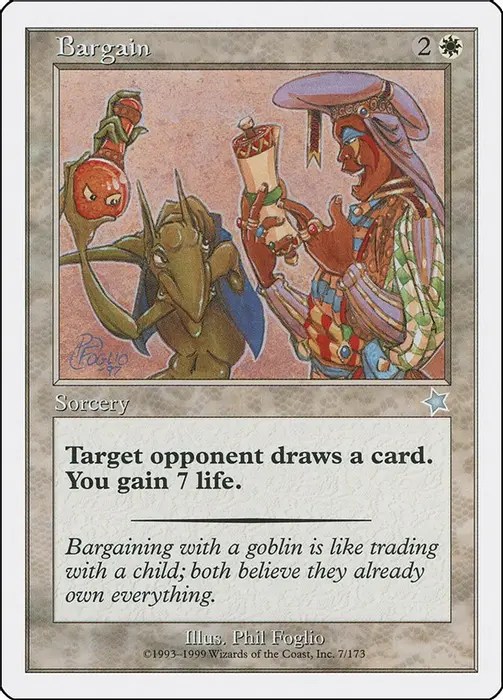
Bargain
Let me remind you once again not to fall into the “gain life” trap. Having life points is all well and good, but gaining health alone is only going to delay the inevitable. In this case it’s even worse, as Bargain costs its owner 3 mana to gain life and have their opponent draw a card — the much better end of the deal. Had this card had the opposite effect, it would be pretty good. This way, however, it is just the worst possible bargain for the player who casts it.
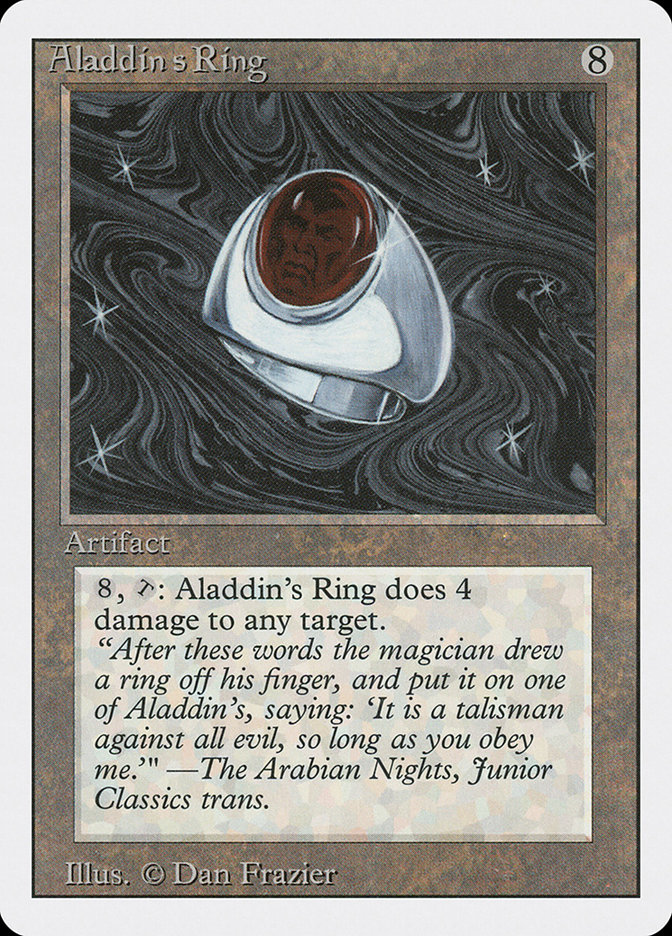
Aladdin’s Ring
Dealing 4 points of damage to any target is pretty neat, but not when it costs goddamn 8 mana to pull off. Even worse, this thing costs another 8 mana to put into play, making it one of the least cost-effective damage options in the history of the game.
I remember Aladdin not having an expensive ring that he could use to burn his enemies in the classic tale, but maybe he just never got the chance to put this cumbersome piece to good use.

Mudhole
For 3 mana, Mudhole will remove all land cards a player has in their graveyard, meaning that it’s very good at destroying lands which are already destroyed. Sure, bringing lands back from the graveyard is a possibility, but hardly ever the biggest threat at your opponent’s disposal. Worst of all, this is a rare card. The thrill of spending $5 on a Odyssey set booster in the hopes of not getting this was the real deal.
What’s the point of this? Making sure the forests buried in you opponent’s graveyard won’t turn into extremely valuable oil a million years later?
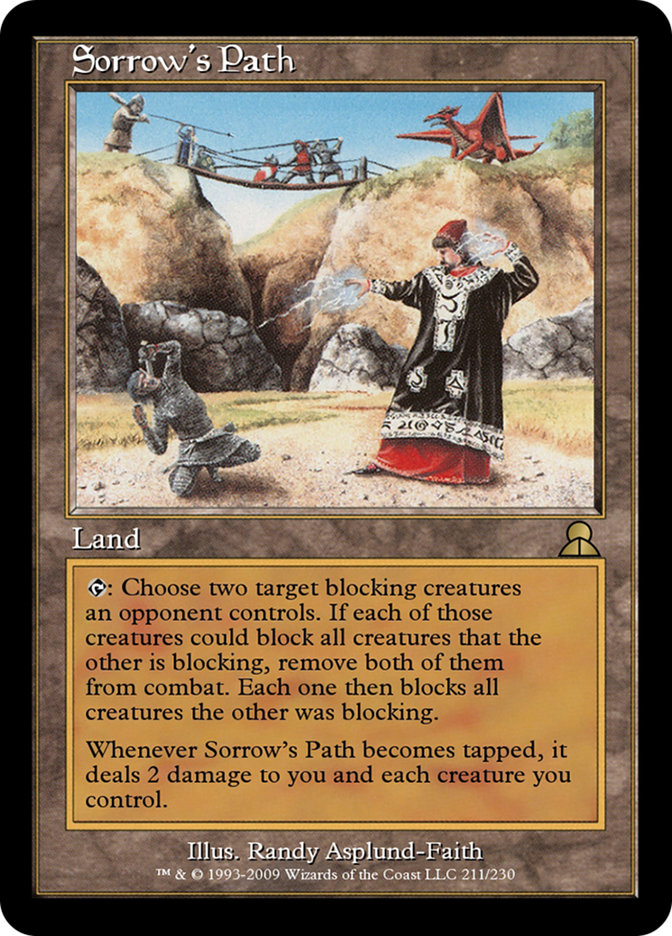
Sorrow’s Path
This is arguably the most legendarily baffling land in the history of this game. A land that produces no mana and serves only to swap blocking creatures. That would’ve been pretty unremarkable by itself, but there’s also the part where this land will deal you and each of your creatures 2 damage each. Please note that this card belongs to the Dark set, thus was meant for a time when creatures wouldn’t automatically heal at the end of the turn.
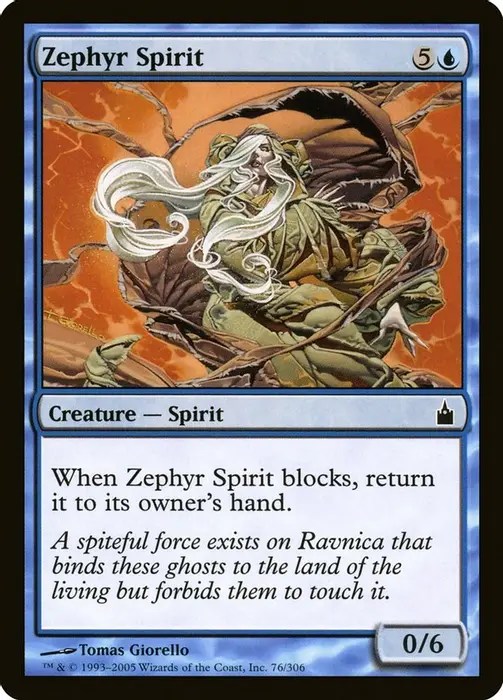
Zephyr Spirit
Zephyr Spirit is yet another contender for the worst creature in the game, and he doesn’t even have the excuse of being an “old” card. At 6 mana, Zephyr Spirit has an enormously huge cost that’s comparable only to its incredibly awful ability. While you’d think that coming back to the player’s hand is cool to prevent it from dying, having a creature that costs so much to do so little — and only once before you have to pay for its cost again — feels like just one big joke. The only thing preventing this from being a contender for the worst creature in the game is the fact that it is a common, so your $5 wouldn’t be entirely wasted if you happened to find one inside a booster back in ’05.
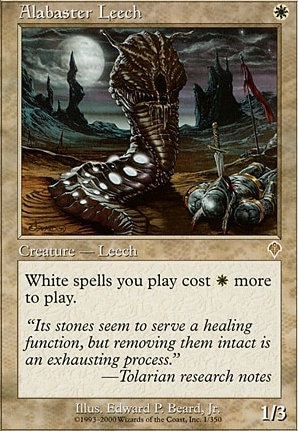
Alabaster Leech
And here we have it, a crappy creature that, for the measly price of one mana, will make the game much harder for its owner — and its owner alone. Alabaster Leech would only ever more or less make sense in a deck where it’s the only White spell, but it just isn’t worth it simply for the extra 2 points in defense that it has over the regular 1 mana cost creature. For maximum effect, try to have four in play at the same time. The fourth one will be costing you 4 mana and bring no upsides whatsoever!
Alabaster Leech has a sick design, though it really doesn’t look like a creature that should belong in White. It really does feel like a tapeworm that some evil psychic Necromancer tricked the good guys into believing was a creature worth enlisting in their army.
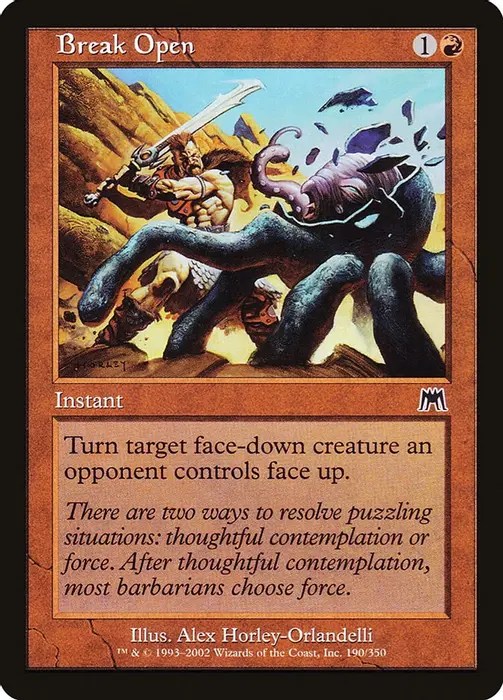
Break Open
This is yet another one of those cards meant to work only within their own block. “face-up” and “face-down” creatures refers to creatures with the “Morph” ability, which allowed a select few creatures to go face down and become 2/2 creatures with no abilities.
Notice how the card’s artwork shows a Barbarian breaking a shield only to reveal a cute and seemingly defenseless Octopus inside? Well, thing is, the very very large majority of morph creatures are actually way stronger when facing up. Even worse, many of these creatures have abilities that get activated once they get turned upside. Imagine not knowing the Onslaught set and keeping on using Break Open on creatures facing down in the doomed hopes that one day they won’t be just wasting mana to greatly help the enemy.








